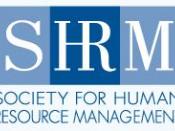Abstract Australian workplaces are diverse, reflecting the diversity of the Australian population. Diversity is commonly interpreted in relation to ethnicity, gender and culture. Diversity also captures the differences and similarities between individuals and group, encompassing race, ethnicity, gender, culture, age sexual orientation, religion, language, socio-economic status, education, family status, physical and mental ability. (Nicholas, 2001) These demographic variables are related to other important diversity characteristics such as values, attitudes, interaction styles, physical and cognitive abilities and non-work commitments. Within the workplace, these demographic characteristics and employee differences in technical skills, organisational tenure and organisational position impact on individual and organisational performance and productivity. The impact of diversity is both positive and negative.
The bottom line benefits from effectively managing diverse workforces are the diversity dividend. Diversity management contributes significantly to the bottom line by improving the efficiency of human resource management, increasing job satisfaction that translates into lower absenteeism and turnover, higher levels of productivity and performance; and enhances the organisation's reputation as an employer of choice.
Increasingly, organisations must be knowledge creating and leading in their field. Organisations will win or lose market share, prosper or fail on their ability to be innovative. A knowledge organisation continually expands its capacity to create its future. The learning organisation uses its diverse workforce to create value, through better problem solving, innovation, decision making and creativity. When diverse teams and workforces are managed effectively, they integrate information to create new knowledge and disseminate that knowledge throughout the organisation. Learning organisations add to the bottom line through using knowledge creation as a competitive advantage over rivals.
Australian organisations compete in a global marketplace. Organisations operating internationally must develop capability to navigate culturally complex environments. Operating in other economies such as Asia where there are different formal and informal institutions challenges Australian...


